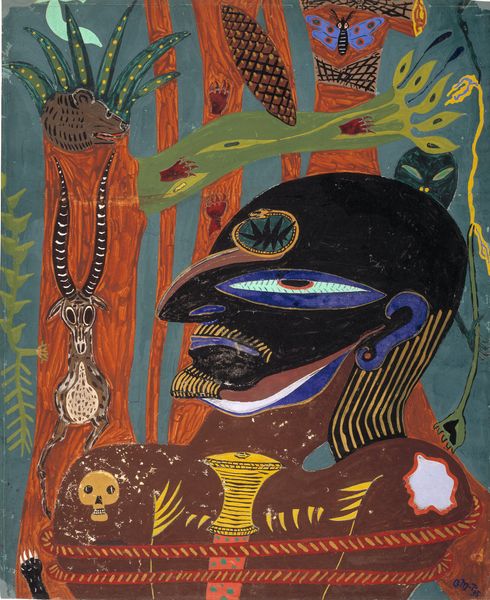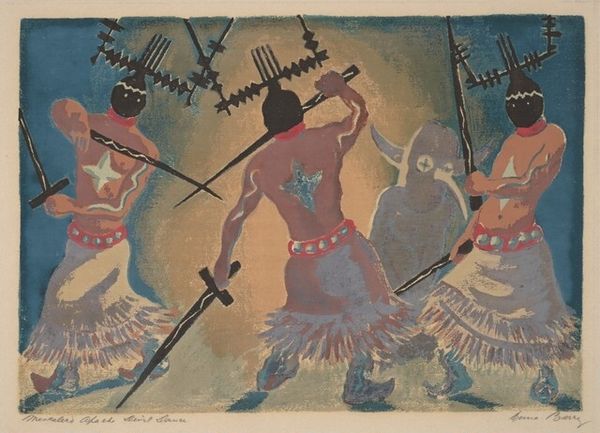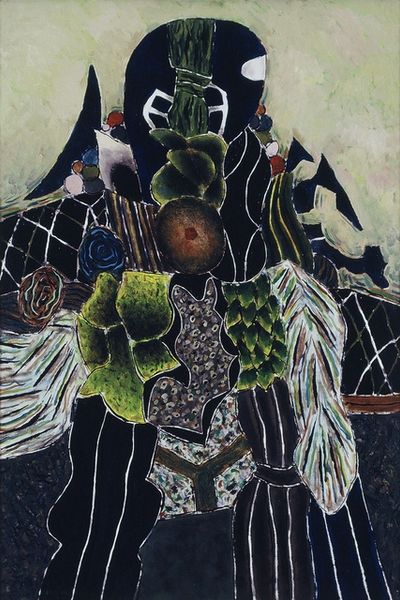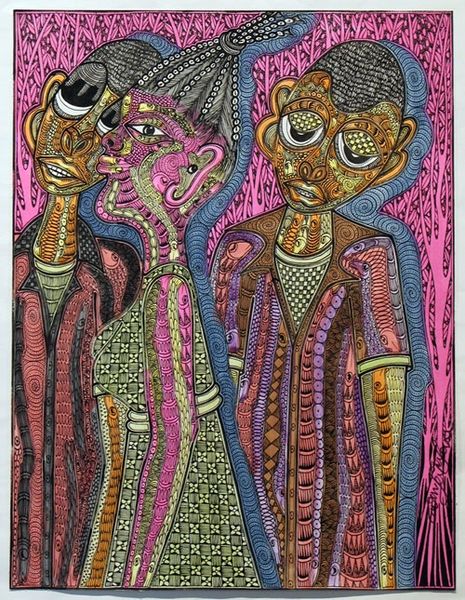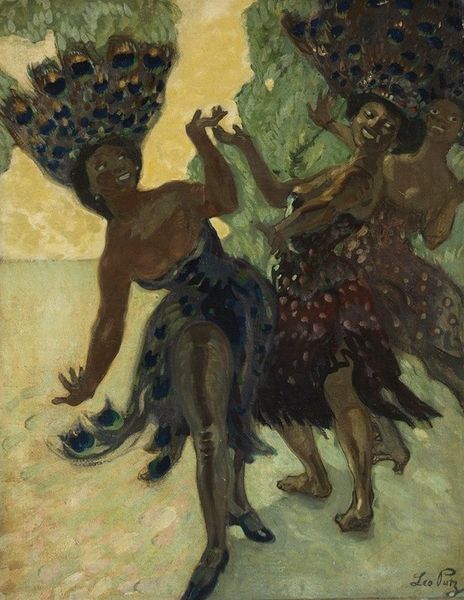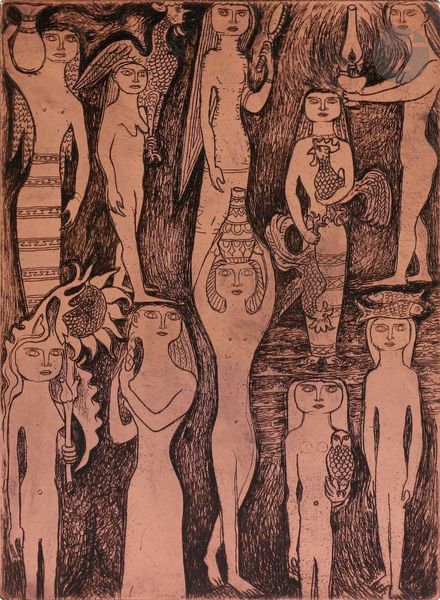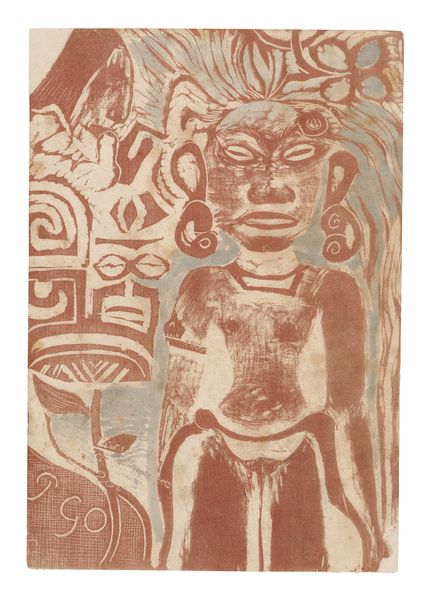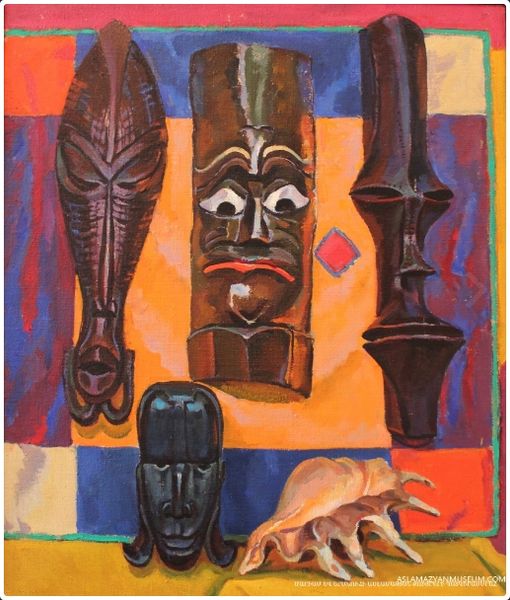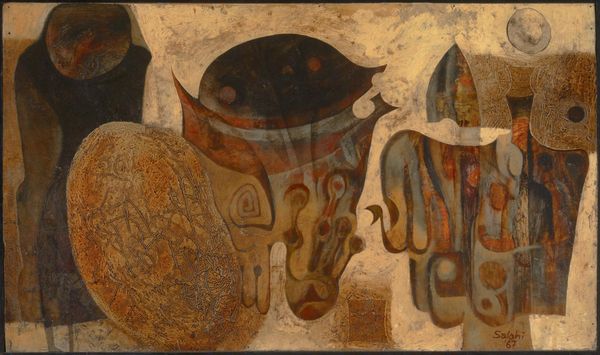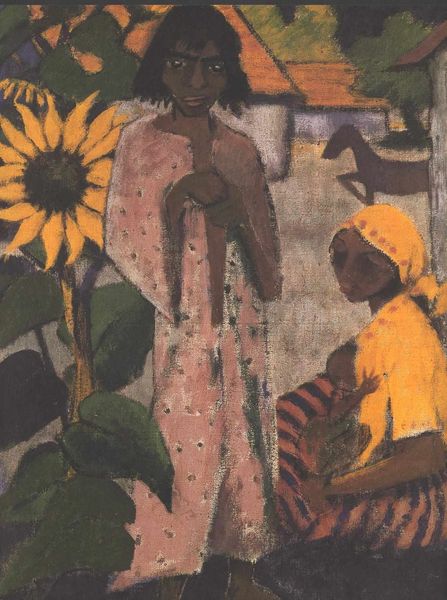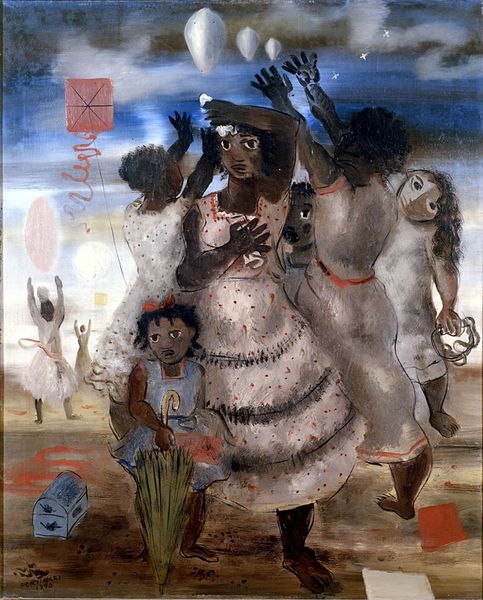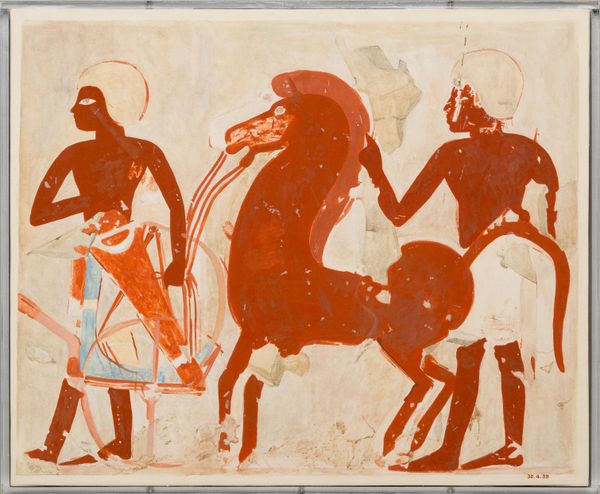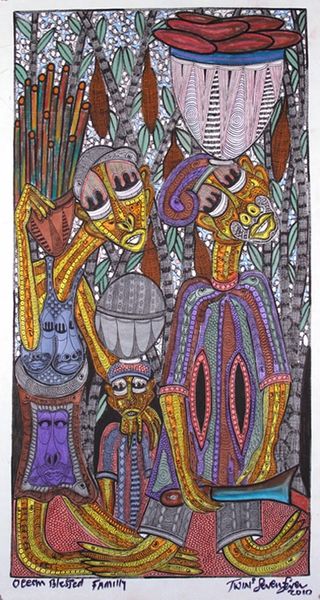
painting, oil-paint
#
portrait
#
figurative
#
narrative-art
#
painting
#
oil-paint
#
figuration
#
group-portraits
#
academic-art
#
modernism
Copyright: Public Domain: Artvee
Curator: Looking at this striking piece by Cyprián Majerník, painted in 1940 and titled "Black Men," what immediately catches your eye? Editor: Well, the feathered headdresses, definitely! They’re almost comically grand, like birds exploding upwards. It's got this slightly unsettling vibe, but also a real strength in the figures themselves, standing their ground. I wonder if it is just that feeling on looking on a forgotten tribal ritual that now remains a simple painting. Curator: That unsettling feeling is interesting. The composition is deliberately simplified, almost stylized. Those circular shields with the strange glyphs, the rather rigid poses of the figures, and, as you noted, those majestic, yet slightly unnerving feathered adornments—all evoke a sense of ritual and perhaps, as we view them from the remove of history, a sense of cultural distance. Editor: Cultural distance, that's a polite way to put it. I'm sensing a heavy dose of…something exoticized, perhaps? It reminds me of early ethnographic photos. You know, a blend of genuine curiosity and…othering. What’s with the symbols on the shields anyway? Are they real, imagined? Curator: That’s a keen observation. Majerník was working during a period when European artists were increasingly interested in "primitive" art, often through a lens of colonial power dynamics. The shields… they appear to be stylized versions of traditional African designs. Whether Majerník accurately replicated them, or if they are of his imagination is impossible to say, but those patterns clearly signify identity, possibly tribal affiliation, status, maybe even a coded message or purpose for the warriors. I feel that that cultural clash, both within and outside the picture plane, gives that artwork all its beauty. Editor: The clash is definitely working here; its giving some punch into what could otherwise be a bland rendering, also providing more depth of feeling. But I am left wondering if those three men ever stood together, or if those were different subjects depicted together under the umbrella of someone's stereotypical feeling towards African indigenous tribesmen. What do you reckon about it all? Curator: Exactly! These elements combine to produce something beyond the purely representational. It is cultural commentary of its day, now viewed and debated by our current values. It's precisely in that tension – between observation and imagination, cultural sensitivity and…well, the lack of it by today’s measure that I think the work gets to be powerful, and why these silent, vigilant men hold our attention across the decades. Editor: So, it seems, sometimes discomfort can be as valuable as harmony in the art that speaks to us, isn’t it?
Comments
No comments
Be the first to comment and join the conversation on the ultimate creative platform.
